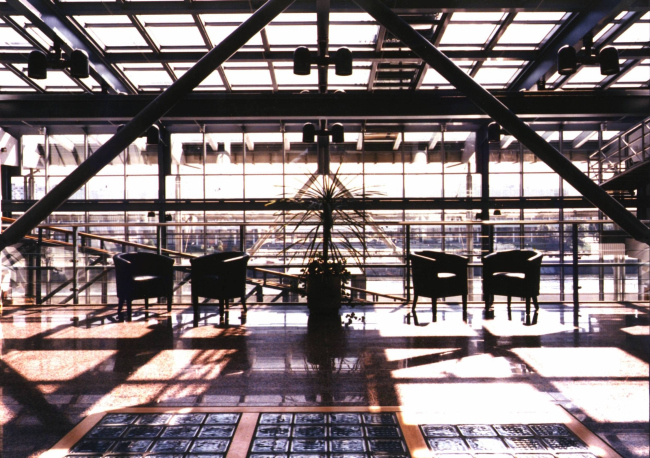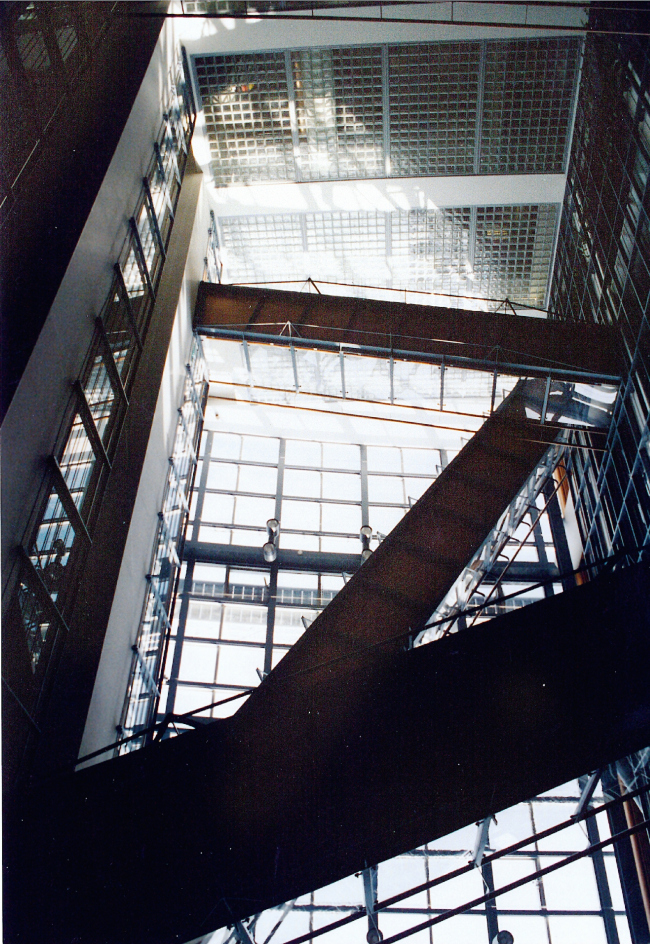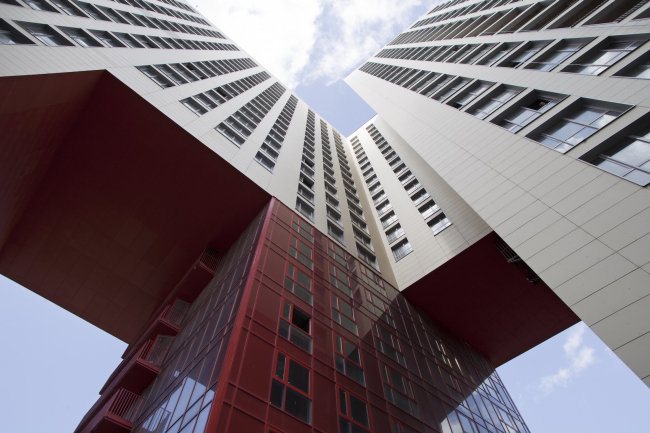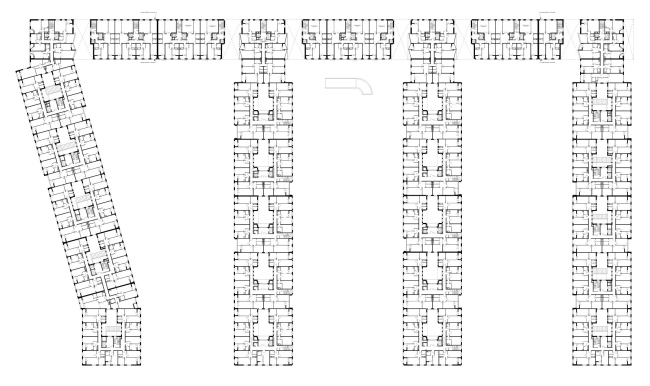|
Published on Archi.ru (https://archi.ru) |
|
| 28.10.2015 | |
|
Rais Baishev: "I am a space packer". |
|
|
Lilya Aronova |
|
| Studio: | |
| Ostozhenka Bureau | |
|
One of the cofounders of "Ostozhenka" architectural bureau and the chief architect of such projects as the building of International Moscow Bank, a Residential Complex in Odintsovo, and the residential complex "Water Colors" in Balashikha shares about the role of the chief architect of the project and about his personal preferences as opposed to what is considered to be modern and fashionable. 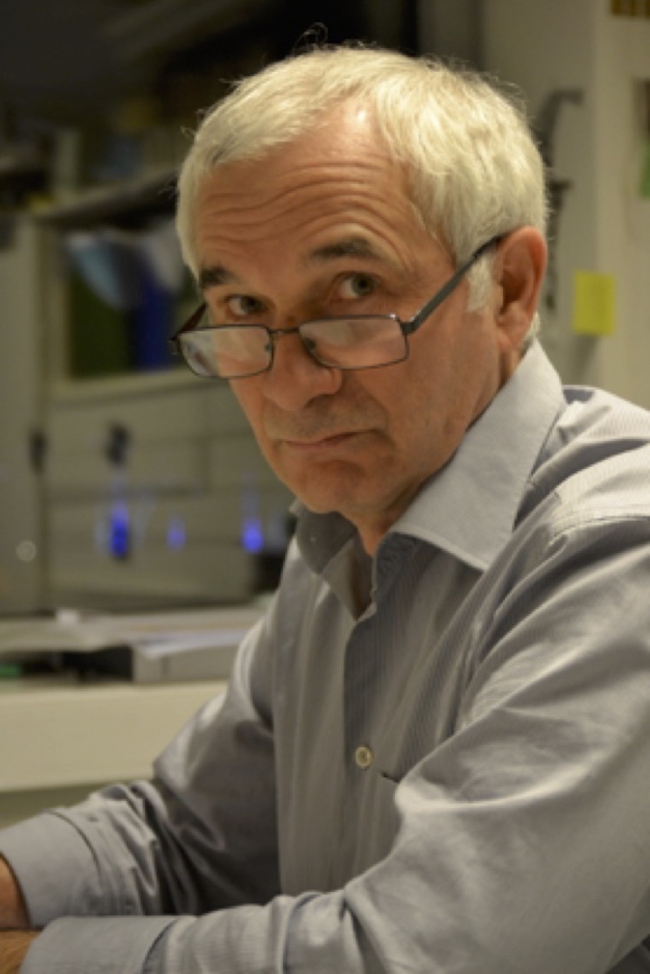 NoneArchi.ru: You have worked with this company from the moment of its inception. The story of Ostozhenka is well known in the architectural community to the point of being a classic example. What did this mean to you in the very beginning? Rais Baishev: By that time, when we already made the transition from the state-run design bureaus to a free market economy, this country already had the prerequisites for the appearance of such private bureaus. By that time we also had a considerable working experience, and the new economic situation could not exempt us from our obligations before the profession. So, for me a little changed back then. As a matter of fact, greater freedom imposed greater responsibility on us - proportional to our initiative. We started working and soon the team came together. You can put it this way: we took what was most valuable to us from our "previous" life and carried it over to Ostozhenka, the main thing being our commitment to working as a team. This remains the main value for everyone of us up to the present day. Do you have any specialties within the framework of your bureau? You know, this always comes naturally when people work together as a team. Sooner or later it turns out that somebody can do something better than somebody else, and this becomes his specialty or the cross that he has to bear. The time may come when the person really dislikes it - I don't want to limit myself with this - I can do more, I can do better! Here is the thing with architecture, however - you only have as many specialties as you have real architects on your team. Look at the real big-time masters - can you ever confuse their works or take them for someone else's? Never! They are the manifestations of their personalities and those manifestations are truly unique. You cannot really give up your personality, but then again, you don't have to. And what is personally closer to you? Here is the thing - the chief architect of the project is literally responsible for everything. This work is very hard to do but it's very rewarding at the same time. Any work consists of analysis and construction. The broader is your vision of all the prerequisites and constituent parts of this work, the more vectors of influence you can see before you get down to it - and not only in the narrow professional sense - the more exact your solution will be. And it is only further on down the line that some of your personal preferences - or should I even say "sympathies" - may come into play. Some people like working with planes, some are into structures that appear in the process of work. I know my toolbox. Most of all, I am interested in the space, the plastics, and the interaction with the context. What is an architect's material? An artist has his canvas and his paints, a sculptor has, say, a piece of clay in his hands, and we as architects get to work with the space, the void, the emptiness! I once asked myself a question - what's my job about? I am a space packer. I pack spaces. I pack the emptiness in accordance with economic laws, in accordance with the existing rules and regulations, but, above all else, in accordance with the laws of harmony - something that we had drummed into our heads back in the school of architecture... "Water Colors" residential complex © Ostozhenka"Water Colors" residential complex. The multicolored inner courtyards. Project © OstozhenkaAnd if we are to speak about Ostozhenka on the whole - does it have a market niche of its own? The architectural genre that Ostozhenka is into has long since been formed for us. We, of course, try to push these limits and avoid burying ourselves inside this shell - but we are still aware what is ours and what is not. For each of us, designing a private residence is a lot more challenging than a two thousand apartments residential complex. One way or another, this gets broadcast to the world outside, and we get "our" commissions - as a rule, these are large-scale urban projects. Simply because you are always a hostage of your initial success! The residential complex in Odintsovo. The yard facades © OstozhenkaThe residential complex in Odintsovo. The yard facades © OstozhenkaDo you have any particular stage of your working process that you like better than others? The most fascinating experience for me is when you are one on one with the uncertainty in the very beginning. This is the moment when you can lose yourself completely in the face of the vistas of the possible solutions that spread before you. I sometimes even have dreams about this stage. And sometimes I catch myself thinking: how long has it been since I had this feeling of weightlessness, this beautiful feeling that maybe kids get when they are anticipating a new and exciting game. And this fleeting moment of intuitive solution is followed by long design and implementation. Did you ever regret things that you did or did not do? Or did you ever look at one of your already implemented projects thinking that had you had the chance to start all over again you would have done it in a different way? I think that the very idea that you can redo something is pretty naive in the first place. Generally, I always anticipate the moment between the end of construction and the beginning of distortions done to my project - because it is at that period of time that I have to find the time to explain at least to myself just what and where I did wrong. This is when the realization comes. By the way, I've already been through a situation when a building that I designed got torn down - with all the good things that it had inside and all the soul I poured into it. A different function was required in this place - and they tore it down. Oddly enough, I don't really have a problem with it. Probably, you just want to take it philosophically - it's just another lesson that life teaches you. The longer you live the more temporary everything around you becomes. While back in the good old days things were made to last forever, now it's almost a public disgrace if you don't change your old television-car-smartphone with a new one. And this applies to architecture as well. Nowadays, you can change the facades as easily as you put on a new set of clothes - which used to be unthinkable. But then again, this must be the sign of our time and you have to live with it. I am sure that in your career of chief architect of the project there were occasions when you ran into these or those unexpected obstacles and had to get around them somehow... What you are speaking about is called "anecdote", a real-life story, funny, or pathetic, or both. Once a customer comes to me, all excited, and he goes: "Look, the top floor is selling so well! Let's add another one on top of it!" Or, for example, the well-known story of the glass "pocket" fenced by the terrace of Moscow International Bank (now UniCredit bank)? Oh, yes, this is also an "anecdote", I mean, in a good way. A proverb. But this is not my story altogether. And I know rather many interesting people who can share with you a lot of such stories from their life. Or, maybe, from mine... UniCredit Bank on the Prechistenskaya Embankment © OstozhenkaUniCredit Bank on the Prechistenskaya Embankment © OstozhenkaUniCredit Bank on the Prechistenskaya Embankment © OstozhenkaUniCredit Bank on the Prechistenskaya Embankment. Section view © OstozhenkaOk, then I will ask a more serious question - do you have any style preferences in architecture? Quite a lot depends on what values we believe in and what we appreciate from the reality that was there before us. The 1920's, for example, when this country was at the cutting edge of the world's avant-grade architecture. We were lucky to learn from the masters who had created a new picture of the world back in those days. Just imagine how much they were through only to hand us down the legacy that the whole world now values so much! The dramatic history of Russian architecture, thanks to my teachers, became to me something personal when I was still in college. And it defined, just as any truth or revelation should, my priorities in life and profession. The residential complex in Odintsovo. The red arch that cuts the corner of the building; inside the arch, the same-type red residential building is placed © OstozhenkaCould you put your creative principles in a nutshell? Probably, they are still in the making. Of course, I have some certain beliefs; they come from my own practice and appreciation of everything that goes on around me. To me, it's very important that I create something new in the process of my work. All that we do is search for something that never was there before us. At the same time, what we try to do is avoid creating the so-called "fashionable" stuff. Because what is "fashionable", after all? It is something that is easily swallowed, easily copied and, ultimately, easily mass-produced. It is a lot more exciting if you can work at the level of typology of spaces, remembering that there is Heaven and Earth as God created them. What else is crucially important for you in your work? It is very important to build up the right kind of dialogue. First - with your customer. Then - with your colleagues. And ultimately there is a dialogue between your project and its context, and the project itself starts to dictate what is necessary for it. And if the city accepts what you've built, and your customer is willing to cooperate again - then you may say you've done a great job. But if something goes wrong at any of the levels, you cannot so much as pass the blame to anyone. All you can say is: "It's me who is the chief architect of the project. I take the responsibility!" Aren't you afraid of that? As a matter of fact, no. You know, architecture is no place for cowards. Thank you very much for this conversation. Of course, I would like to ask what is there on your desktop at the moment. What are you working on now? More of the same, I guess. The good old space and their packaging. I think I will be doing this for the rest of my life. At least I sincerely hope I will. The residential complex in Odintsovo. Overview © Ostozhenka"Water Colors" residential complex © Ostozhenka"Water Colors" residential complex © Ostozhenka"Water Colors" residential complex © Ostozhenka"Water Colors" residential complex © Ostozhenka"Water Colors" residential complex. Plan of the first floor © Ostozhenka |
|





